About Us
13 year-old with abrupt onset of left facial weakness
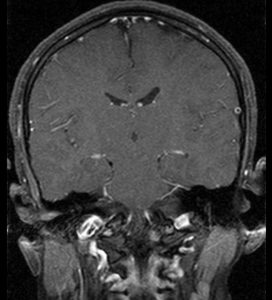
T1 coronals post Gad
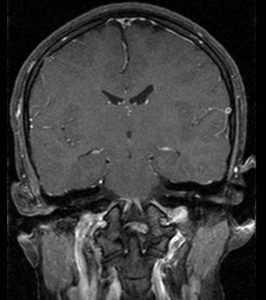
T1 coronals post Gad
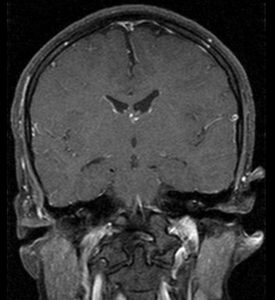
T1 coronals post Gad
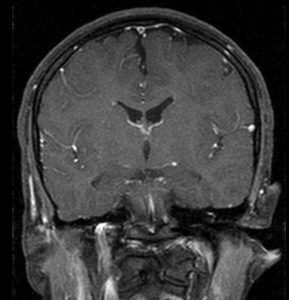
T1 coronals post Gad
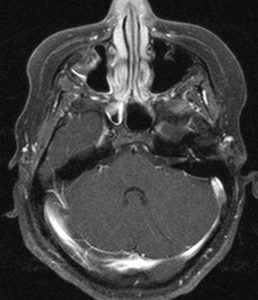
T1 axial post Gad
Findings:
Enhancement of the left CN VII. Specifically the distal canalicular, the labyrinthine, the tympanic, and the mastoid segments enhance.
DDX:
Bell’s palsy, atypical schwanomma
Diagnosis:
Bell’s palsy
Discussion:
Thin-section contrast-enhanced MR scans are recommended for individuals with atypical presentation of facial paralysis. In the proper clinical setting, contrast-enhanced MR imaging may permit a positive radiographic diagnosis of Bell’s palsy, which has previously been a diagnosis of exclusion.
Submitted by Anthony Giauque, MD, UW Neuroradiology Fellow